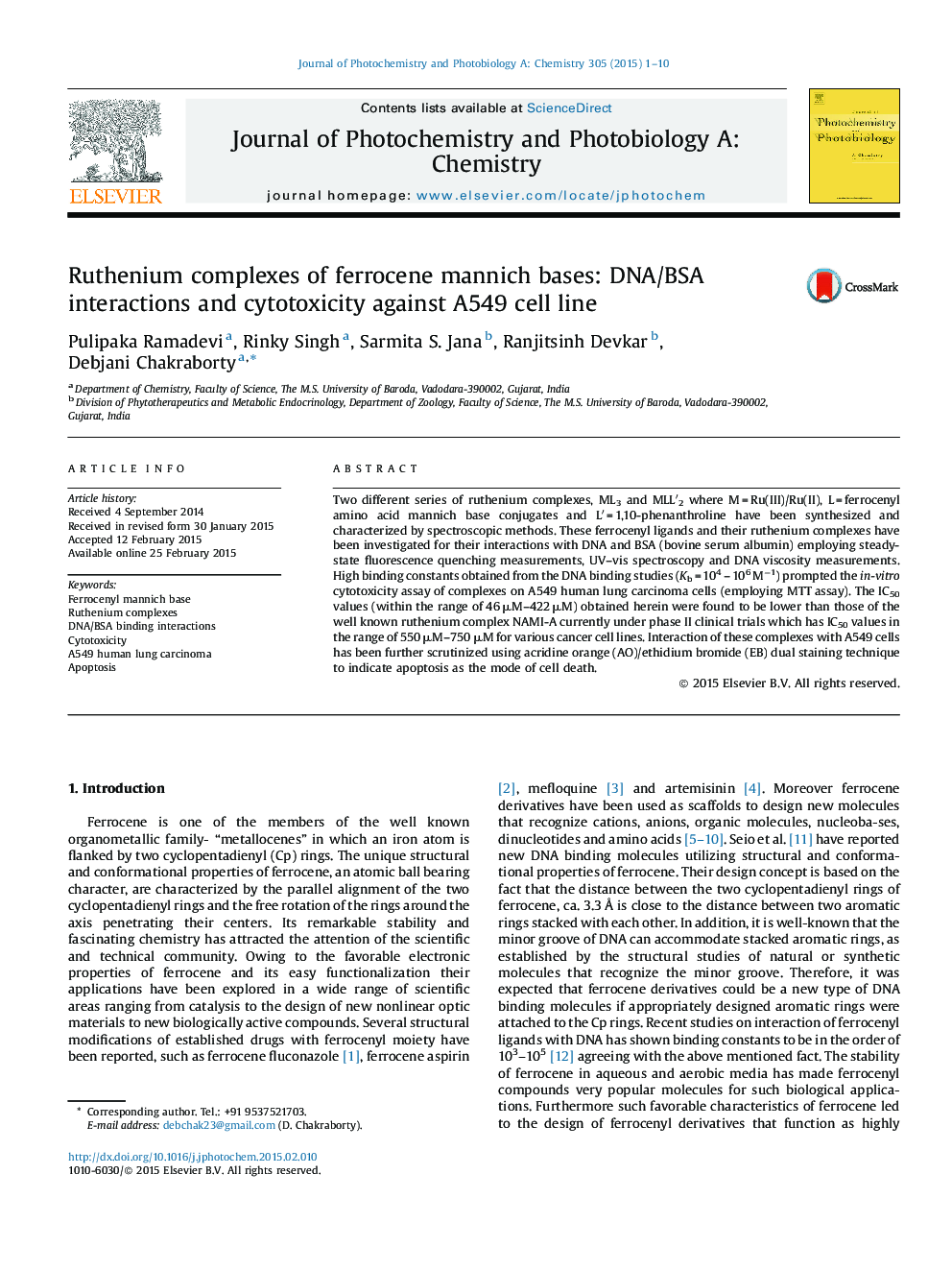| کد مقاله | کد نشریه | سال انتشار | مقاله انگلیسی | نسخه تمام متن |
|---|---|---|---|---|
| 26701 | 43972 | 2015 | 10 صفحه PDF | دانلود رایگان |

• Ruthenium complexes have gained much attention as possible alternative to platinum drugs against cancer.
• Ferrocenyl mannich bases have been found to be good groove binders of DNA rather than intercalators.
• The ligands show enhanced binding interactions with biomolecules when complexed to Ru(II) and Ru(III).
• Ru(III) complexes were found to be more potent than Ru(II) species against A549 cell line in MTT assay.
• Higher cytotoxicity attributed to activation by reduction to cytotoxic species within the cancer cell.
• The complexes cause apoptotic cell death – preferred mode of cell death.
Two different series of ruthenium complexes, ML3 and MLL′2 where M = Ru(III)/Ru(II), L = ferrocenyl amino acid mannich base conjugates and L′ = 1,10-phenanthroline have been synthesized and characterized by spectroscopic methods. These ferrocenyl ligands and their ruthenium complexes have been investigated for their interactions with DNA and BSA (bovine serum albumin) employing steady-state fluorescence quenching measurements, UV–vis spectroscopy and DNA viscosity measurements. High binding constants obtained from the DNA binding studies (Kb = 104 – 106 M−1) prompted the in-vitro cytotoxicity assay of complexes on A549 human lung carcinoma cells (employing MTT assay). The IC50 values (within the range of 46 μM–422 μM) obtained herein were found to be lower than those of the well known ruthenium complex NAMI-A currently under phase II clinical trials which has IC50 values in the range of 550 μM–750 μM for various cancer cell lines. Interaction of these complexes with A549 cells has been further scrutinized using acridine orange (AO)/ethidium bromide (EB) dual staining technique to indicate apoptosis as the mode of cell death.
Figure optionsDownload as PowerPoint slide
Journal: Journal of Photochemistry and Photobiology A: Chemistry - Volume 305, 1 June 2015, Pages 1–10